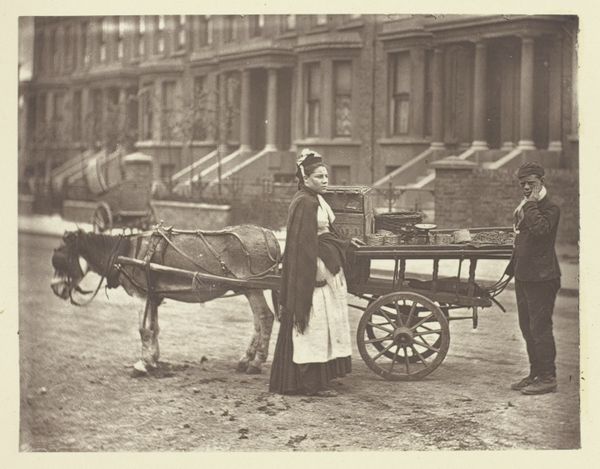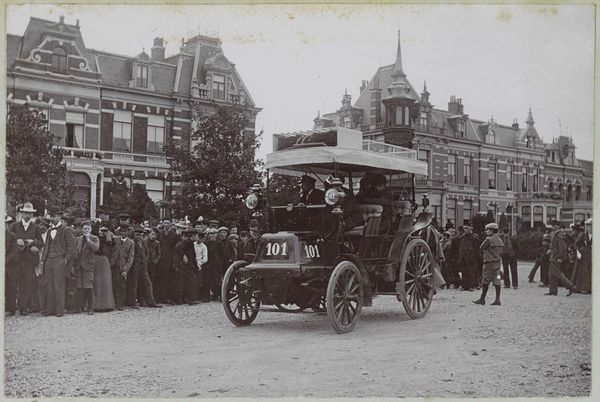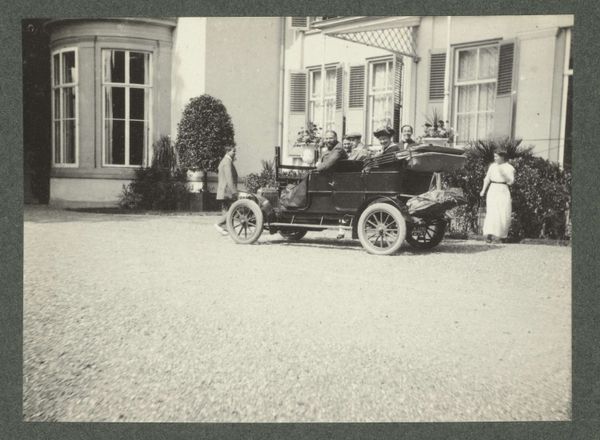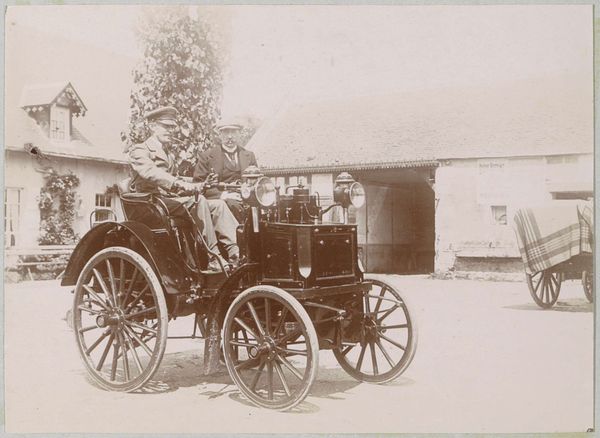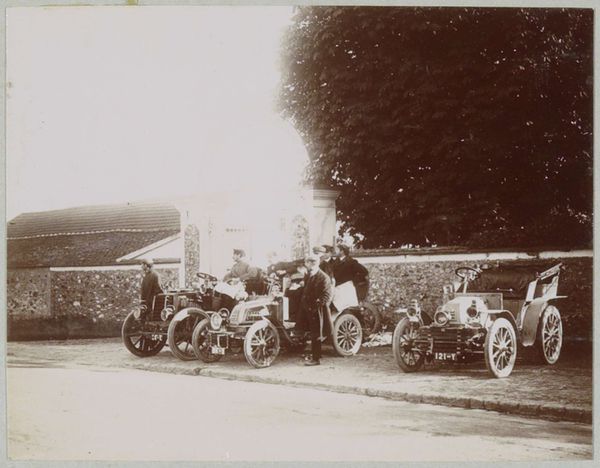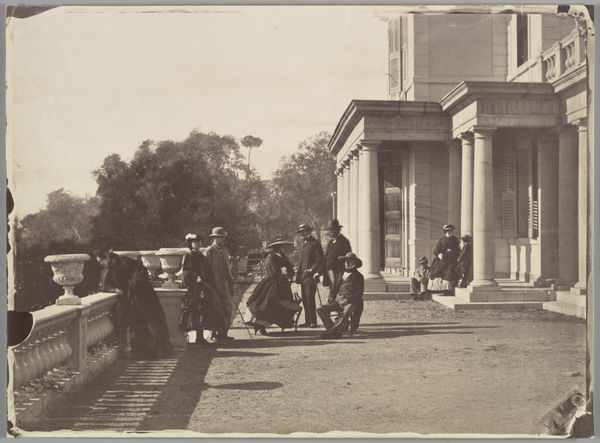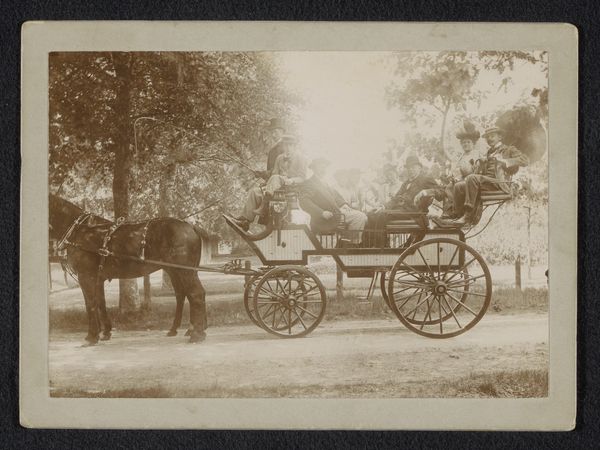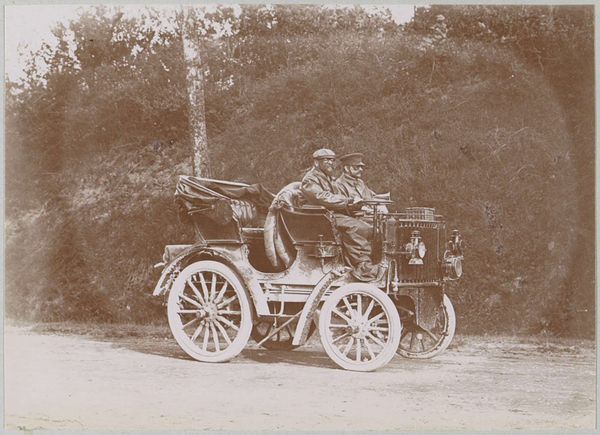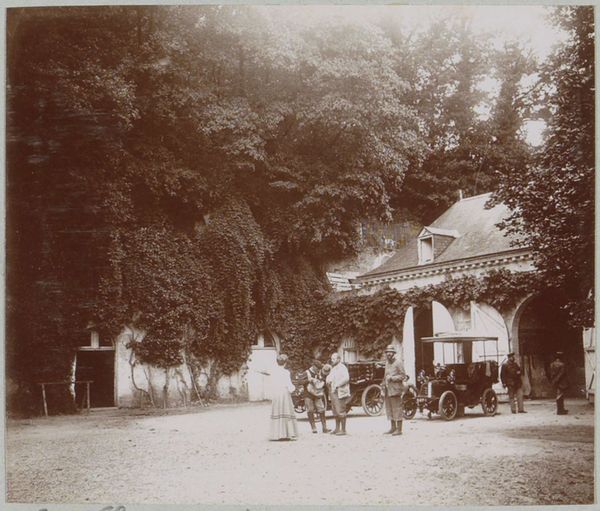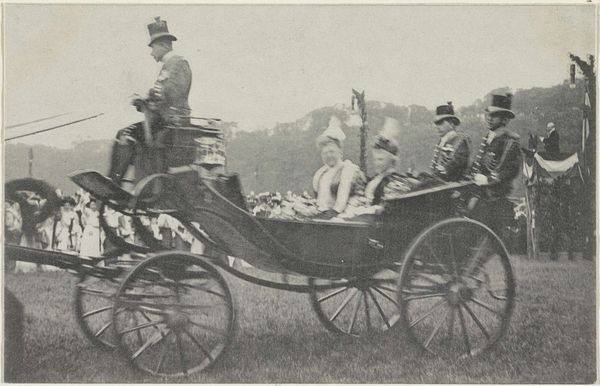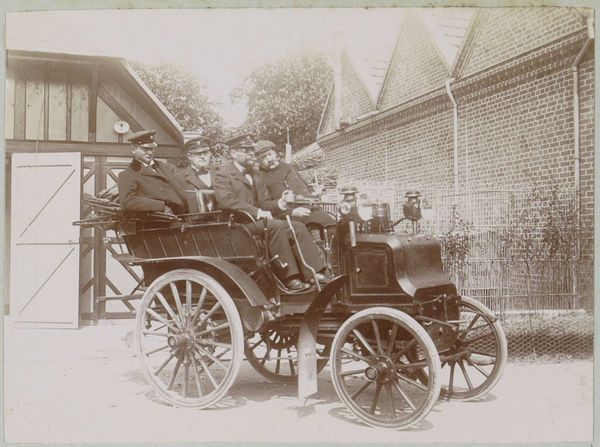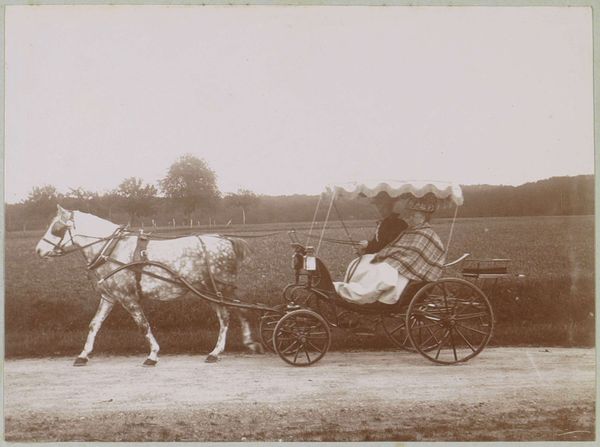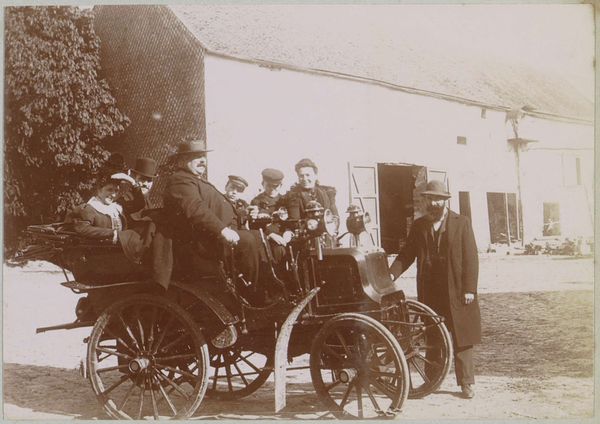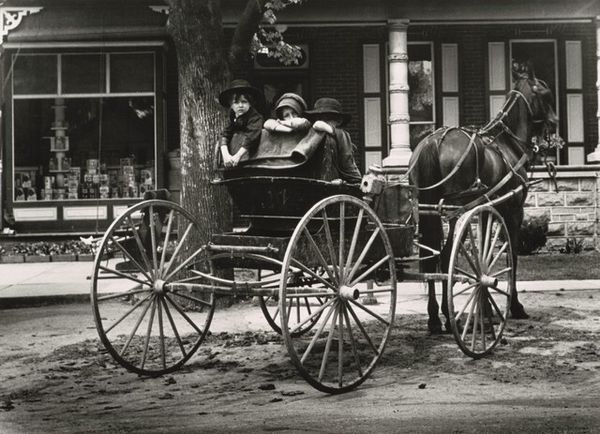
Groep personen op een koets met vierspan voor landhuis Nimmerdor, Amersfoort. 1903
0:00
0:00
Dimensions: height 169 mm, width 224 mm, height 198 mm, width 268 mm
Copyright: Rijks Museum: Open Domain
Curator: This gelatin-silver print, entitled "Groep personen op een koets met vierspan voor landhuis Nimmerdor, Amersfoort", captures a group of people on a horse-drawn carriage, posed in front of a country house in Amersfoort. The photographer is Henry Pauw van Wieldrecht, and it's dated 1903. What are your first impressions? Editor: It feels staged, certainly. The overall tone is rather muted. Despite the grandeur of the house, draped in what appears to be ivy, there is something melancholic in the static arrangement and almost dreamlike softness. Curator: Yes, that softness is intentional, a hallmark of Pictorialism which sought to elevate photography to fine art. It mimicked the effects of painting, favoring atmospheric effects over sharp detail, something often called "fuzzygraphy" in its own day. What significance might the choice of that style hold here? Editor: The deliberate softness adds a layer of nostalgia, mythologizing this family and their social status. It isn't simply a portrait; it aspires to be something more profound, to encapsulate an entire era, almost a fable-like memory of prosperity and comfort. The subjects blend into the surrounding building's facade that mirrors a kind of visual conformity between their attire and architecture. Curator: Notice the framing; how the carriage and the figures upon it are arranged. They aren’t haphazardly placed; they're posed for maximum visibility. We must think of the horse-drawn carriage less as transport, more as stage, carefully set, arranged with those faces, carefully picked, positioned to address some assumed notion of lineage or social standing. The faces almost tell of collective heritage. Editor: The uniformity in dress certainly enforces that collective identity, visually reinforcing their class belonging. Yet, doesn't it also suppress individuality, each figure becoming part of the backdrop, no more distinct than the windows and the foliage. There’s a sense of both performance and containment at play, both here and in their tightly constrained composition. Curator: I agree. It’s a visual paradox; their presentation exudes freedom and command, yet their fixed posture hints to subtle constrictions of belonging to high society. The image, ultimately, doesn’t only capture a moment, but a constructed history, both of family and nation. Editor: An idealized, perhaps even romanticized, history—where form serves to conceal as much as it reveals. The technical choices made in taking the photo offer us something that reflects both control of an image, and those controlled within it.
Comments
No comments
Be the first to comment and join the conversation on the ultimate creative platform.
